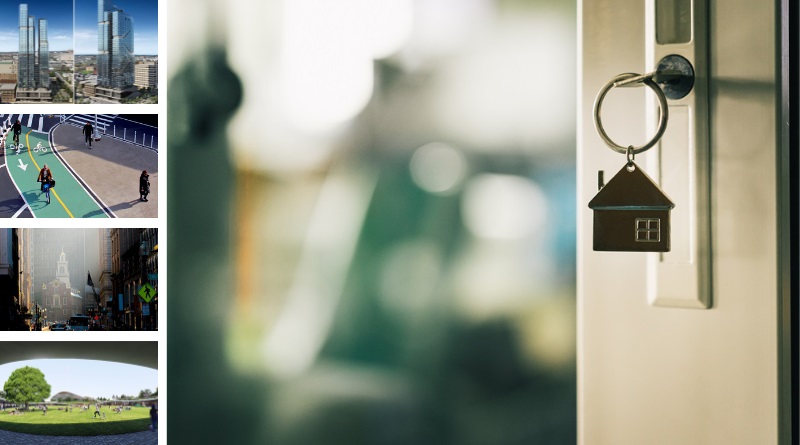NJ’s affordable housing legislation advances (right); Newark’s first Halo tower tops out; NYC pedestrian deaths dip with Vision Zero; Could Boston be next with congestion pricing?; Jiaxing’s station in the forest (left top-to-bottom)
Article of the Week

NJ Lawmakers Pass Bill to Get More Affordable Housing Near Transit, Grocery Stores
Mike Hayes, Gothamist, February 12 2024
The New Jersey Assembly has passed legislation that offers increased incentives for affordable housing construction near transit and grocery stores. Formally overhauling the Council of Affordable Housing, the bill directs State’s Department of Community Affairs to issue new housing obligations. The State Legislature also increased bonuses for towns building near a transit center, to better address the state’s 200,000-unit housing shortage.
NJ TOD News
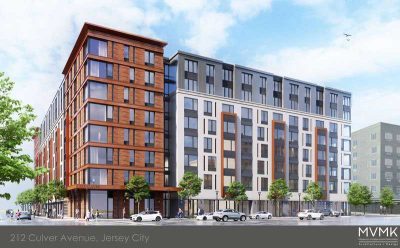
JERSEY CITY—Developer Plans 365-Unit Project in Jersey City
Holden Walter-Warner, The Real Deal, February 14 2024
A new 300,000-sq. ft. development will replace a former industrial site in Jersey City’s West Side neighborhood. The 1.3-acre project will feature mostly studio and one-bedroom units, and include 1,600 sq. ft. in retail space, 400 sq. ft. in pet recreational space, and a 184-space parking garage. The Culver Avenue site is less than a half mile from the West Side Avenue Light Rail Station.
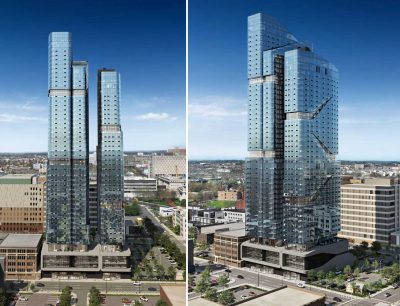
NEWARK—First Phase of Newark’s Three-Tower Halo Project Tops Out
Chris Fry, Jersey Digs, February 14 2024
Construction on the first phase of the Halo Project has reached its peak height of 38 stories. Phase 1 will include 297 units, while Phases 2 and 3 will add a 42-story tower and a 46-story tower, resulting in a total of 949 units. The project will also include a 343-vehicle parking garage. The development is within Newark’s Transit Village, the half-mile surrounding the intersection of Broad and Market streets. Once completed, Phase 3 building will be the tallest in the city.
Transit and Equity News

NEW YORK—A Decade In, Pedestrian Deaths Dip Under Vision Zero
Daniel C. Vock, Route-Fifty, February 13 2024
Ten years after the start of Vision Zero, New York City has seen a nearly 13 percent decrease in pedestrian fatalities, while traffic deaths have increased in the U.S. Though the city hasn’t reached its target goal of zero deaths, city leaders have shown commitment to traffic safety through infrastructure and increased enforcement. Yet, racial disparities in improvements exist, as predominantly white neighborhoods saw a 4 percent decrease in traffic fatalities versus a 13 percent increase in predominantly Black areas.
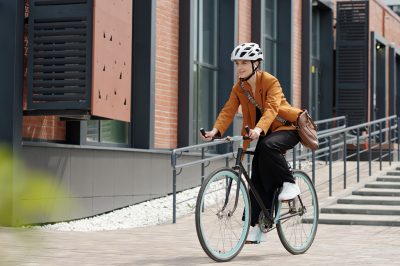
Public Health and Urban Planning Go Hand in Hand. Why Aren’t We Doing More to Promote Cycling?
Adamo Anthony Donovan, Cole-Atma Dev & Samuel Gagnon-Smith, Healthy Debate, February 5 2024
The healthcare community is vocal on various advocacy fronts like physical activity and climate change, yet strangely silent on transportation and urban planning, focusing on individual behaviors such as wearing a bike helmet over systemic safety measures. Proposals suggest a shift towards human-centric urban planning, with cycling as a prime target due to its potential health and equity benefits. Dispelling misconceptions around cycling and addressing concerns about trip length and winter cycling can encourage more sustainable transportation choices, benefiting public health and societal equity.
Regional and National TOD News
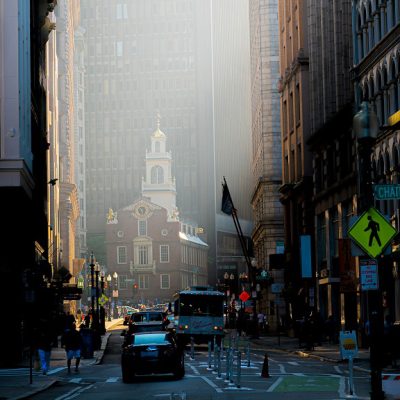
MASSACHUSETTS—Could Boston Be the Next City to Propose Congestion Pricing Fee for Drivers?
Kristina Rex, CBS News, February 15 2024
Could Boston be the next U.S. city to adopt congestion pricing? Boston City Councilor Tania Fernandes Anderson has proposed discussing the implementation of a flat fee for drivers entering downtown during business hours, aiming to reduce traffic congestion and improve urban air quality while promoting public transit. Inspired by similar measures in cities like New York, where a $15 congestion fee is set to launch, the idea faces skepticism in Boston due to historical transit unreliability and concerns about insufficient train stations and parking. While there’s no concrete proposal yet, the concept sparked debate among commuters, with city councilors set to further discuss its feasibility before any firm decision is made.
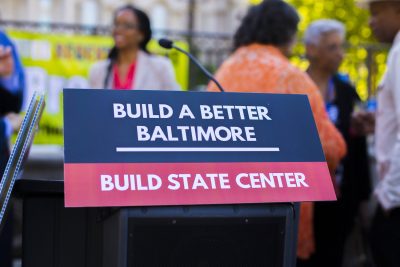
MARYLAND—Maryland’s State Center Could Become Baltimore’s Best TODs
Dan Malouff, Greater Greater Washington, February 13 2024
The Maryland State Center in Baltimore, soon to be vacant, occupies valuable urban real estate and is primed for redevelopment. Positioned at a critical transit hub entrance and intersecting multiple neighborhoods, it presents an ideal opportunity for a vibrant mixed-use district. Baltimore’s forthcoming master plan aims to capitalize on this potential, marking the city’s second attempt at transforming the site into a transit-oriented hub.
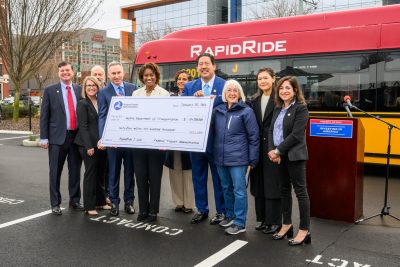
WASHINGTON—Federal Grant in Hand, RapidRide J Line Heads Toward Construction
Ryan Packer, The Urbanist, February 13 2024
Construction is set to begin on the latest part of Seattle’s RapidRide, a network of limited-stop bus routes. The J Line will replace Route 70 and enhance travel between Downtown and the University District. The project, funded in part by a $64.2 million Federal Transit Administration Small Starts grant, has faced opposition from some Eastlake residents concerned about parking loss. The $128 million project is set to be complete in 2027.
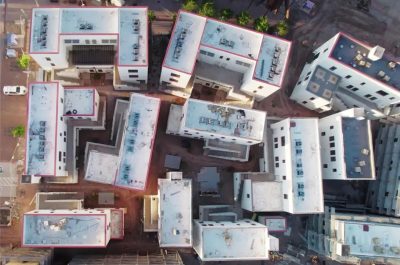
ARIZONA—The First Car-Free Community Built From Scratch in the US Is Starting to Take Off: ‘For Some, Cars Equal Freedom, But for Me, It’s a Restriction’
Robert English, The Cool Down, February 12 2024
Located a half-hour east of downtown Phoenix and adjacent to Metro light rail line station, Culdesac has become one of the nation’s first walkable car-free neighborhood in a suburban setting. The $170 million, 17-acre community broke ground in 2019 and welcomed its first residents in 2023. Developers anticipate about 1,000 residents living in 760 units by 2025. In addition, the developers will provide 200 free e-bikes to bolster the site’s accessibility.
International TOD News

BANGLADESH—BRTC to Launch Three More Bus Routes With India
Foisal Ahmed, The Business Standard, February 10 2024
The Bangladesh Road Transportation Corporation (BRTC) will consider introducing three new international bus services between Bangladesh and India. The expansion into its neighboring country will provide Bangladesh a daily net profit of 70,000 BDT (about $640). The agency also plans to soon acquire 400 electric buses, 340 CNG-powered buses, and 200 diesel-powered buses.
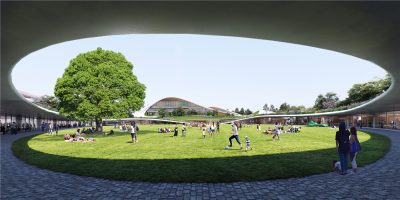
CHINA—MAD Architects Completes ‘Train Station in the Forest’ in China
Niall Patrick Walsh, Archinect, February 7 2024
MAD Architects renovated an outdated train station in Jiaxing, China, blending modern design with nature by integrating a reconstructed 1907 station, underground platforms, and an expanded park with cultural and commercial buildings. The project aims to create an inviting urban space that redefines transportation infrastructure while promoting community interaction and enjoyment. The station, 60 miles southwest of Shanghai, is expected to serve 5.28 million people per year when it reaches full passenger capacity in 2025, and serve as many 2,500 people an hour at peak times.
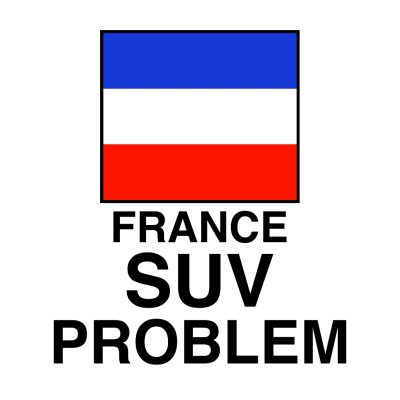
FRANCE—Paris Votes to Crack Down on SUVs
Jess Weatherbed, The Verge, February 5 2024
Parisians have voted to triple parking charges for out-of-town SUV drivers, recognizing that SUVs are 20 percent more polluting and twice as likely to kill a pedestrian in a collision than a smaller vehicle. The measure is designed to incentivize cleaner and safer transit options for its residents. The decision is particularly beneficial to its residents, as only three in ten Parisians own a personal vehicle.

